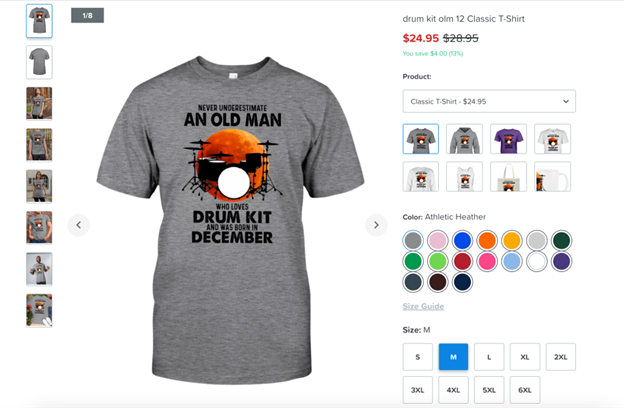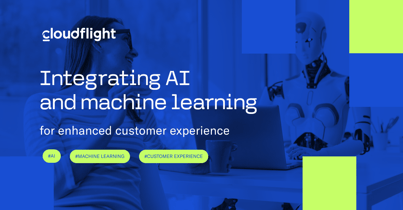Customer expectations in eCommerce keep rising every day. Visitors that used to accept subpar experiences because they knew no better, now simply go elsewhere and never look back. Modern eCommerce needs to be fast, secure, intuitive, and, perhaps most importantly, personalized. One-size-fits-all strategies simply don’t cut it anymore.
This is why, some time ago, hyper-personalization emerged as the next step in the evolution of personalized eCommerce. Powered by big data, machine learning (ML), and artificial intelligence (AI), hyper-personalization made it possible to craft experiences and messages that are truly tailor-fit for each individual customer.
There’s a catch, though: their success or failure depends almost entirely on the data that they’re working with. This is potentially a deal-breaker. The average internet user is becoming more and more aware of the value of their personal data and might be less willing to give it away. So, is hyper-personalization in eCommerce still a thing given these circumstances? Let’s find out.
What is hyper-personalization?
Hyper-personalization is an advanced level of personalization in marketing and user experience that goes beyond traditional targeted approaches. It comes down to leveraging sophisticated technologies, data analytics, and AI to create highly individualized and tailored experiences for each user or customer. The goal is to provide content, recommendations, and interactions that are uniquely relevant to the specific needs, preferences, and behaviors of an individual.
Personalization vs. hyper-personalization
As the name suggests, hyper-personalization in eCommerce is personalization taken to its next stage. Standard personalization leverages surface-level data, such as the purchase history, general demographic information, and interests, for surface-level customization. This can be, for instance, an ad based on search themes or a recommendation for a predefined complimentary item that’s related to a previous purchase. There’s nothing wrong with this kind of personalization; we simply can do better than this.
This is where hyper-personalization comes in. The main difference between the two is the amount of data that’s collected and processed. In the case of hyper-personalized eCommerce, this usually happens with the use of AI, which greatly increases the analytical capabilities. For instance, if a customer buys an article of clothing, the system is equipped to extract and analyze much more information from the purchase, such as:
- preferred styles and colors.
- size.
- body type.
- disposable income.
- shopping times.
- preferred payment and delivery method.
Combined with data from outside sources, such as, for instance, weather forecasts, trends, or special events, the system can craft a hyper-personalized message that will hit all the right notes with a specific individual.

Image source: Envato Elements
For the purpose of old-fashioned personalization, the customer is just a representative of a particular demographic and a part of a segment. Because of this, it’s very likely that more than one person will receive the very same message. In contrast, when it comes to hyper-personalization, a customer becomes a multidimensional individual who also exists in the ever-changing context of the seasons, global economy, tastes, and so on. With all these variables in action, there’s a much bigger chance for truly tailor-fit and one-off messaging.
Opportunities with hyper-personalization
There's little doubt that, when used to its full potential, hyper-personalization can be an extremely powerful tool in the hands of every eCommerce manager, marketer, and user experience (UX) designer. Here are some of the most significant opportunities that it offers.
Responding to customer expectations
As McKinsey’s report puts it bluntly, 71% of modern eCommerce customers expect a personalized experience, and 76% will shop elsewhere if it’s done poorly. It’s hard to fault them: internet users have grown accustomed to personalization efforts as a means of, in a way, shielding them from a constant stream of irrelevant messaging and fishing out the important parts.
Removing obstacles on customers’ journeys
When used to its full potential, hyper-personalization can shorten eCommerce customers’ journeys and remove obstacles on their paths. Such messages can take their recipients straight to the relevant products or categories instead of generic landing pages and automatically apply filters that match their individual preferences. Each click and page load that’s needed to complete a purchase builds frustration and reduces conversion rates, so eliminating some of them can make a significant difference in a business’s bottom line.
Self-refinement
Because hyper-personalization campaigns tend to be driven by AI, they can adapt to individual user preferences but also learn what works and what doesn’t and evolve based on the continuous influx of real-time data and analytics. As a result, each message that’s generated in this way can be better and more effective than the last one with minimal involvement of human specialists.
Building brand loyalty
Personalization that’s done the right way can work wonders in terms of customer retention. It creates an image of a brand that truly understands its target audience and respects their customers’ time and preferences. That said, it’s crucial not to overdo it. As Gartner’s study finds, 38% of customers will stop doing business with a brand whose personalization tactics they consider too creepy.
Potential problems with hyper-personalization
There’s plenty to gain by implementing hyper-personalization techniques but, as mentioned before, there are also a few major obstacles along the way. Let’s take a closer look at how limiting they truly are.
Overreliance on algorithms
Hyper-personalization tends to rely on complex AI- and ML-powered algorithms to analyze and predict user behavior. On the one hand, this opens up the potential of robustness and constant improvement that have been discussed before. On the other, however, algorithms have been proven to replicate and reinforce the stereotypes and biases of their creators, even those that are very subtle and unnoticed. If left unchecked, this can lead to disastrous results in terms of brand image. Cathy O’Neil’s book “Weapons of Math Destruction” is often cited as the most significant work on the topic of algorithms gone wrong and is definitely worth a read before implementing hyper-personalization tools.
Availability of data and processing power
If AI and ML solutions are the engines that move hyper-personalization efforts, then data is the fuel that powers it. Such data needs to be available in large quantities and cover the relevant niches. For instance, an electronics eCommerce business will find little value in information related to their customers’ preferences in pets but can definitely use data about their preferences in mobile operating systems. Depending on the individual business case, acquiring such data can be more or less of a challenge.
There’s also the question of processing power and scalability. As hyper-personalization tools grow larger and analyze more and more data, their engines must keep up. AI and ML models are generally resource-hungry, so, at some point, the infrastructure might reach its limit. Because of this, it might be a good idea to set up such tools on highly scalable platforms like Amazon Web Services.
User attitudes toward data collection
As we’ve established above, any algorithm-based system is only as good as the data that powers it. So, can you expect to be consistently getting the data that you need for the purpose of hyper-personalization? It’s reasonable to have doubts: the general sentiment among internet users seems to be a growing awareness of the value of personal data and a reluctance to share it. Such guesses, however, can be wrong, so let’s take a look at the research.
For this purpose, we’ll focus on cookies. Of course, they aren’t the only means of collecting user data, but they're the best-known example. As such, they can provide a representative peek into the broader mindset of internet users and what they currently find acceptable or not.

Image source: Envato Elements
A recent study conducted by All About Cookies resulted in telling conclusions:
- Out of a sample of 1,000 American adults, 82% of respondents declared that they are at least somehow familiar with how internet cookies work, and 76% said that they know how to clear and disable them.
- Only 18% of internet users reject all cookies as a habit. The remaining 82% either accept all cookies blindly or only allow some of them after research.
- Interestingly, the younger the user, the less concerned about privacy they seem. Baby boomers are the demographic that rejects cookies most often while Gen Z is most likely to accept them blindly.
Things look similar in Europe. You could expect the GDPR legislation and its consequences to have an impact on internet users’ attitudes, but this doesn’t seem to be the case. In 2021, 36% of users reported that they had changed their internet browser settings to prevent or limit cookie use, and only 21% used software that limits the ability to track their activities.
Condensed to its essence, the current cookie situation is this: internet users are more or less aware of how cookies work and the information they store, but they're generally okay with giving this information away. This, of course, is very good news for anyone interested in implementing hyper-personalization techniques.
Practical applications of hyper-personalization initiatives
All in all, things look quite optimistic for hyper-personalization in modern eCommerce. While there are some issues to be mindful of, they definitely aren’t insurmountable, and it’s very much worth the effort.
At this point, one key question remains: what direction should eCommerce businesses take their hyper-personalization efforts? This depends on a number of factors, and it’s impossible to give a universal answer. That said, here are a few ideas and industry-specific examples that might inspire you.
Fashion industry
You could argue that no product is as inherently personal and individualistic as the clothes we wear. They’re a way to stand out in a crowd, showcase personality and sense of aesthetics, and make a statement about our status. It’s only fitting that fashion eCommerce is one of the most promising areas for implementing hyper-personalization tactics.
Marketing and product discovery
Product discovery and marketing are the areas that are most prone to be revolutionized with the use of hyper-personalization. For one, there’s a lot to accomplish by simply monitoring users’ interests. For instance, if the system notices that a given customer follows a specific celebrity, it can make a tailor-fit recommendation of products that match this celebrity’s style and the customer’s physique. Likewise, if the customer has been recently looking at hotels and flights, there’s a good chance they’re planning a vacation and could use some clothes that will be appropriate for their destination that also fit their style. There are almost infinite possibilities to mix and match the information for creative and highly resonant campaigns, and the only limiting factor is the data that you can acquire and process.

An example of early attempts at hyper-personalization in the fashion industry. Specialized stores automatically filled T-shirt and other gadget templates with publicly available information on specific users. Then, they marketed their personalized products directly to these individuals. The results were questionable. Image source: Best Gift 4U
In theory, you can even go a step further. Fashion brands can experiment with setting up a system that would leverage the content shared by a specific customer rather than their data. For instance, the Instagram feed of a specific user can be a treasure trove of information for an AI-powered system to analyze and compare with a product range. After processing, it could automatically message the user with a hyper-personalized suggestion in the spirit of “Based on your style, we think that product X would look good on you.” The technology to accomplish this is already here, but the big question is whether customers wouldn’t consider this kind of marketing too creepy.
Store layout
Hyper-personalization of the store itself is another area that’s worth looking into. As an example, let’s assume that a certain customer already has a few orders in their history. They all contain women’s size M clothes, so it’s safe to conclude that the customer is a woman who typically wears size M. Keeping this in mind, the next time the store system sees this customer visiting, it can automatically adjust its layout for an optimal shopping experience. Instead of displaying a generic main page, it can go directly to the women’s section and automatically select the M size as default when checking product availability. Technologically speaking, this is easy to set up but can have a profound effect on creating the image of a brand that truly understands its audience.

Netflix is often cited as the best example of a service that dynamically adjusts the main page for each individual user.
Automotive parts and accessories
In the automotive parts and accessories sector, hyper-personalization can revolutionize the way customers enhance and personalize their vehicles. Recommending products that are compatible with a given customer’s car is a no-brainer and the obvious place to start, but there’s more potential than this.
On the basis of data on users' lifestyles and preferences, the system can make much more precise pitches. For instance, if a given customer seems like an outdoorsy, adventure-seeking type, ads can go in the direction of making the car more rugged. For the sporty type, on the other hand, parts that directly improve the car’s performance will be more appropriate.
Information on seasonal changes and cars’ histories can play a big part in reaching out with a tailor-fit message at the right time. For instance, it can be a quick win to remind customers that it might be time for a new set of winter tires just after the first snowfall. Likewise, if a customer purchases a part that’s replaced regularly, such as an oil filter, it’s a great idea to send them a friendly reminder when this part is nearing the end of its lifespan.
Finally, the idea of personalizing the store layout itself, which was discussed above, applies just as much in this case. It can make a massive difference in terms of user experience if the store automatically applies the right filters for parts compatibility. It can also, for example, display the parts that might be due for replacement at the top of product listings for easy access.
Diet and catering industry
The diet and food catering industry also provides fantastic opportunities for hyper-personalization. On the first level, companies can collect and process valuable data about customers, without their input, through cookies, search histories, and so on. The information can be related to, for example, their lifestyles, preferences in terms of tastes and regional cuisines, and disposable income. This is closer to the basic segmentation that we’ve grown to expect from modern marketing.
The second level is where true hyper-personalization happens. On top of the collected data, companies can also ask customers for more precise information through quizzes, AI assistants, or even directly from their smartwatches and other monitoring devices. This type of data can go as deep as precise body mass index, fat percentage, allergies and other dietary restrictions, and diet-related goals such as losing weight or gaining muscle.
Processing all this information opens up the possibility of offering unique products and marketing materials for each visitor. Of course, cooking one-off meals for every customer isn’t realistic for a catering service. However, it’s very realistic to automatically pick the best meal for each customer out of a predefined menu and precisely adjust the serving size and time to fit their needs.
The golden age of hyper-personalization is yet to come
There’s no getting away from the fact that modern eCommerce customers expect a certain level of personalization, and it’s one of their key needs. Put bluntly, businesses that don’t offer personalized experiences will most likely lose out to those that do. This is why hyper-personalization efforts should be high on every eCommerce manager’s list of priorities. Although there are certain areas that require careful planning, the notion of hyper-personalization is very much still a thing and can become a highly transformative force for any business.
What’s more, it’s very likely that the best is yet to come. New AI tools dedicated to data collection and processing, and content generation are popping up every day. Each advancement in those areas only increases the potential of hyper-personalization to seamlessly deliver tailor-fit experiences. It’s an exciting time to step into the world of AI-powered eCommerce and explore the nearly endless possibilities that it offers.
Published March 8, 2024










